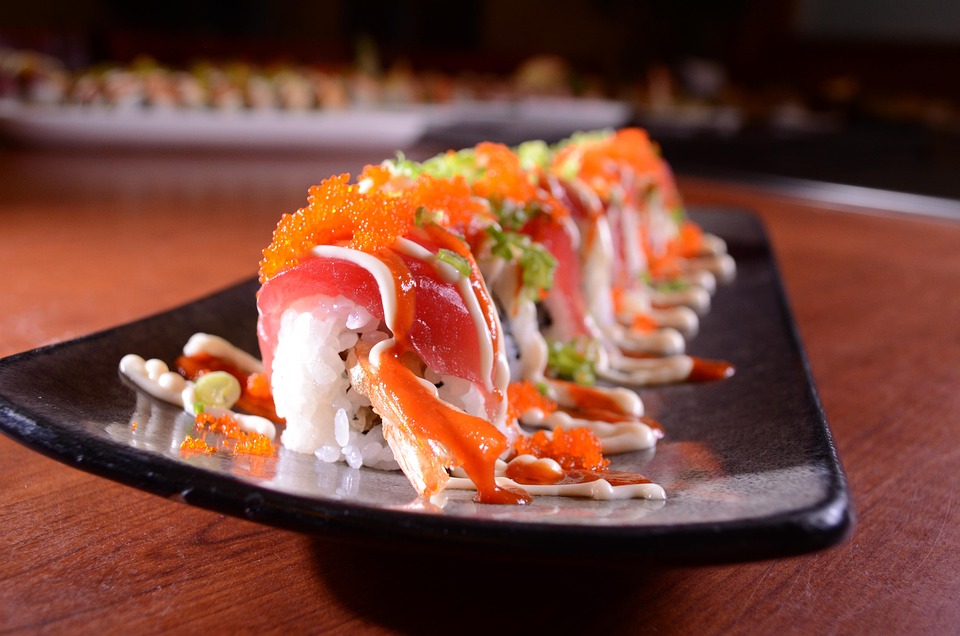Sushi, a culinary masterpiece that transcends borders and cultures, is more than just a meal; it is an art form. This delicacy, deeply rooted in Japanese tradition, combines simplicity, precision, and a profound respect for ingredients. As we delve into the intricate world of sushi-making, we discover the delicate balance of flavors, techniques, and presentation — all essential components in crafting this iconic dish.
A Brief History of Sushi
The origins of sushi can be traced back to ancient East Asia, where fish was preserved in fermented rice. This method, known as narezushi, laid the foundation for what we now recognize as sushi. Over time, the practice evolved, and during the Edo period in Japan, sushi underwent a significant transformation. It shifted from a preservation method to a fast food, where fresh fish was served atop molded rice, giving birth to the nigiri style we know today.
As sushi traveled around the world, it adapted and evolved, incorporating local flavors and ingredients while maintaining its fundamental techniques. Today, sushi has become a global phenomenon, celebrated not only for its taste but also for its artistry.
The Ingredients: Quality Over Quantity
At the heart of sushi’s allure lies its ingredients. A sushi chef’s reputation hinges on the quality of the fish and other components. Freshness is paramount; high-grade fish, sourced from sustainable practices, is essential. Common choices include tuna, salmon, and eel, each offering unique flavors and textures.
Equally important is the rice. Sushi rice is prepared with care, seasoned with a delicate mix of vinegar, sugar, and salt, which enhances its flavor and creates the perfect sticky texture for rolling. The precision in measuring and cooking sushi rice is a fundamental skill for any sushi chef.
Techniques: Skill and Precision
Crafting sushi is both an art and a science, requiring years of practice and dedication. Sushi chefs, or itamae, undergo extensive training to master various techniques, from preparing the rice to the delicate slicing of fish.
Classic Styles
-
Nigiri: Hand-formed rice topped with a slice of fish, often garnished with wasabi or sauces.
-
Maki: Rolled sushi, incorporating rice and filling, typically wrapped in seaweed. Maki can be further divided into uramaki (inside-out rolls) and hosomaki (traditional rolls).
- Sashimi: Sliced raw fish served without rice. While not strictly sushi, sashimi is an essential part of the sushi experience.
Presentation
The visual appeal is crucial in sushi-making. Each piece is meticulously crafted to not only tantalize the taste buds but to also please the eye. The arrangement of colors, shapes, and textures showcases the chef’s skill and creativity. Classic garnishes like pickled ginger and wasabi add a burst of color and enhance the dining experience.
The Experience: Dining Rituals
Sushi dining is as much about the experience as it is about the food. In traditional sushi restaurants, patrons often sit at the sushi bar, where chefs prepare dishes in front of them. This interactive experience enhances the appreciation of the craft, allowing diners to witness the artistry and attention to detail that goes into each piece.
Pairing sushi with beverages, particularly sake or green tea, elevates the overall experience. The delicate flavors of sushi harmonize beautifully with these traditional accompaniments, bringing out the nuances of each bite.
Conclusion: More Than Just Food
The art of sushi extends far beyond the ingredients and techniques; it is a celebration of culture, craftsmanship, and the harmonious relationship between nature and culinary creativity. Each roll, slice, and presentation reflects the chef’s dedication to their craft.
As sushi continues to evolve and inspire, it reminds us of the importance of quality, balance, and respect for ingredients. Whether you are enjoying sushi at a high-end restaurant or crafting a simple roll at home, the experience is a testament to the beauty of this beloved dish — one carefully crafted roll at a time.



